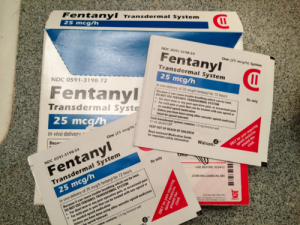 While we were preoccupied with other matters, the opioid epidemic seems to have morphed into the fentanyl epidemic. Here’s an article with a chart that illustrates that perfectly. You’ll see that fentanyl has zoomed past the other suspects, in terms of fatalities.
While we were preoccupied with other matters, the opioid epidemic seems to have morphed into the fentanyl epidemic. Here’s an article with a chart that illustrates that perfectly. You’ll see that fentanyl has zoomed past the other suspects, in terms of fatalities.
Of course, many who overdose because of fentanyl aren’t even aware of its presence. They use what they believe to be heroin or cocaine or benzodiazepines, not knowing it’s been doctored with the stronger stuff. Perhaps they survive the overdose, often through the efforts of others, without realizing how close they came to death.
Others don’t make it. That’s what moves the needle on that chart.
Fatalities draw public concern. If more victims survived, I doubt the media would pay even this much attention (and in view of the rising death toll, opioid use still doesn’t draw the attention it deserves.)
A little background: Fentanyl is yet another result of the longstanding search for better ways to manage severe pain. In this case, scientists were pursuing an alternative to the morphine/ oxygen anesthesia often used in heart surgery. They were interested in synthetics that offered both greater potency and a wider margin of safety in a surgical setting. Fentanyl met those criteria. Two others, sufentanil and alfentanil, followed. Carfentanil, most potent of the group, was never intended for human use. The stuff is just too strong. It’s reserved for large animal veterinary medicine.
Someone hit upon the notion of using fentanyl with very severe cancer pain. At present, it’s available in patch, lozenge, nasal spray, even lollipop form. The drug is effective and many cancer patients swear by it. That’s when used cautiously under physician supervision, of course. The difficulty lies in restricting it to the medical setting.
Traditionally, we haven’t done a good job in that respect. You might say such drugs “escape” to the streets.
Fentanyl is relatively easy (and inexpensive) for an outlaw chemist to produce. Chronic opioid users are predictably attracted to drugs of greater potency. Their elevated tolerance renders the conventional stuff incapable of producing euphoria. Instead, they wind up using heroin mainly to suppress withdrawal (“get well”). Then word hits the street of a new product that can make you feel almost like your first time… No wonder they come running. And some never wake up.
Outlaw or street fentanyl usually comes in powder form that can be inhaled, injected, smoked. That and its low price makes it an ideal adulterant for heroin, coke, benzos, methamphetamine.
In a way this reminds me of the transition from cocaine to crack in the mid-80s. That substantially altered the nature and scope of drug use, introducing a whole new array of problems that required a dramatic shift in policy with respect to prevention, treatment, and law enforcement.
So might this. For healthcare professionals, it may feel like starting over.










